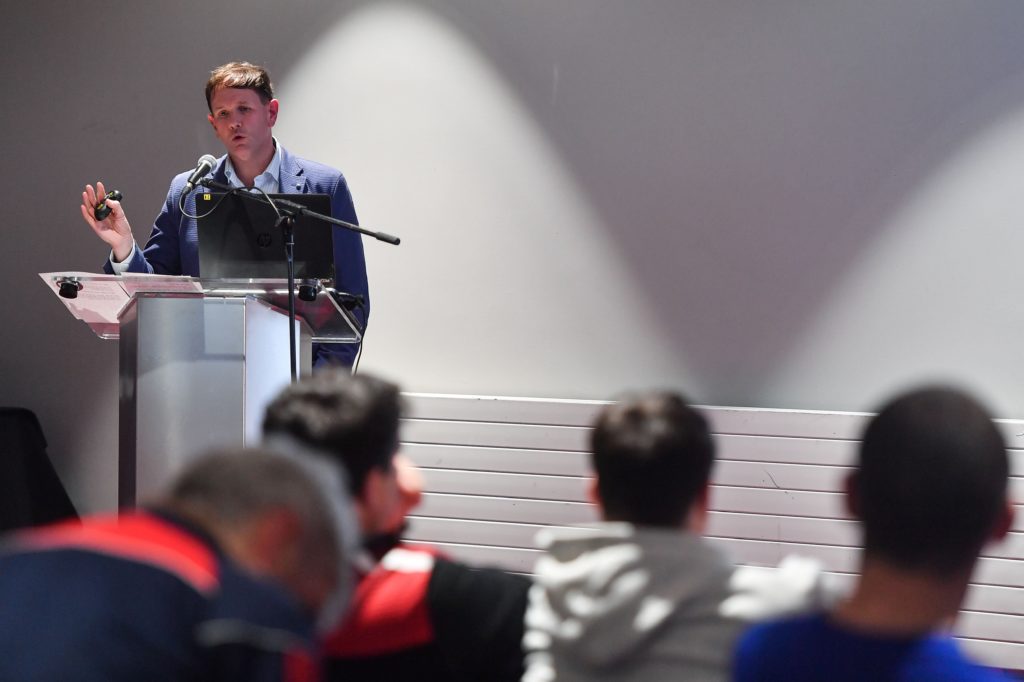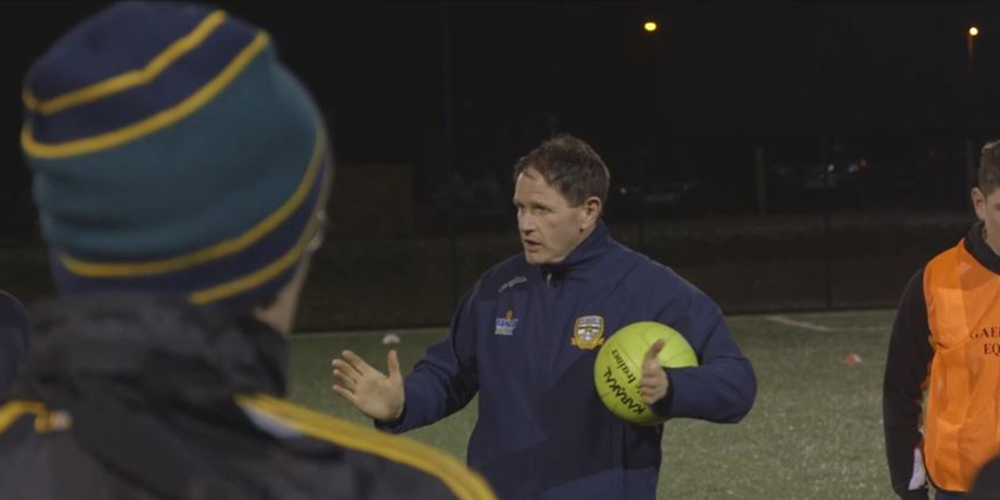So you’re using GPS equipment, engaging in fitness testing, keeping records on counter-movement jumps etc. All worthy and justifiable, right?
A quick question though – why? What’s your rationale and what are the tangible useful outcomes that are being generated as a result of this monitoring?
These can be hard questions to answer quickly – but if we can’t answer them quickly do we need a rethink?
More to the point if our answers are not focused on the ‘person’ every bit as much, or more, as the player/athlete do we need to revisit our motivations, our approaches and our practices?
Let me explain the source of these somewhat uncomfortable questions.
Sports science can be a force for good & positive change. However, from experience, there’s a tendency to look to see what ‘elite’ teams are doing and simply ape that in the 99% of sporting environments that exist outside of professional & elite tiers. There’s an assumption too that these methods and processes are (i) delivering insights (as opposed to information) (ii) supporting useful outcomes and (iii) welcome by coaching & management staff as well as players.

Paul Clarke at the GAA National Coaching Conference 2020
Are we confusing interesting with useful?
Are we serving the person or the player?
Working many years in this space my contention is that we need to perhaps revisit our habits at a level where we uncover if we’re ‘keeping it human’.
Many will say that sports science is the greatest con in sport – they’re wrong.
The greatest con in sport – CONnection.
If we’re not in the place of driving connection with the people we work with what are we truly doing?
Connection with enjoyment, connection with progress, connection with personal development, participation and performance.
By taking sports science research word-for-word into our programs and environments are we driving connection?
Some recent feedback would suggest we’re not.
Take for example the recent ESRI report into GAA players.

Just one snippet….60% are reporting that they are getting less than adequate sleep.
Think about that.
We’re monitoring, measuring and generating reports on guys who aren’t recovering and restoring. Are they really going to progress? Show improvements?
So why generate the reports at all? Why invest the time measuring and monitoring? And if we’re not monitoring something as basic as sleep then what are we monitoring?
Perhaps academic courses in the space need to ‘humanise’ a little? Many say it’s clear that whilst there is a high level of theory being taught, the ability to manifest that theory into useful daily insight is lacking and not on the curriculum. Simply, those engaging in sports science activity are seen as, generally, lacking in the skill of connection – connecting their work with the felt needs of coaches, managers, players…..people.
Is it time to introduce some inverse logic?
Instead of piling on more information and knowledge we start to take things away – the more data and reports we create the more ‘noise’ we create. Instead, we should be looking for ‘signal’ – vital signs that will help us all support the people we’re working with towards improved health, wellness and performance. Go back to the fact that most of the people we work with don’t have the huge pay-packets and glamour lifestyle – performance, therefore, cannot be our only motivation.
What is that Theodore Roosevelt said?
“People don’t care how much you know until they know how much you care”
How apt for a sports science professional striving to differentiate themselves and carve a niche. How about a paradigm shift based on Roosevelt’s words? Instead of being motivated by telling people things and showing how clever we are, just listen.
Two ears, one mouth.
Learn about the cares, fears, hopes, dreams of the people we work with and serve those? Would you say we might get more traction that way?
Let’s look at asking more and answering less.
The right answers to the wrong questions are still the wrong answers.

If all we’re doing is living in the here and now with no ‘global’ picture then sports science and its manifestation can quickly become a tactical tool as opposed to a strategic one.
If we’re quick to examine a strategic tool over a tactical one it feels something like answering “who are we?” and “what do we want to become?”
The better we answer these succinct questions the better the questions we ask in terms of what we need to do and what ‘can sports science do for us’??
Unless sports science is a human-capital investment as opposed to a capital investment or something that’s just cool to do it’s likely not going to end up being a great investment – of time, energy, money or emotion.
Look at Google – most will say it’s a search engine or a search engine company. Or is it a tool that enables smart searches??
Likewise, is our work in sports science just some soft-science work? Or smart work to enable & platform health, wellness and performance development??
A simple hack to get you started; fall back on “Why?” “What?” and “How?”
Our why – the purpose
Our What – the outcome we want to support the purpose
Our How – the process of bringing it all to life.
With this work upfront, we have an anchor and a true-north.
We need to cease looking at what sports science ‘does’ and look at it through the prism of how we can twist it, turn it and mould it to help us evolve to become what we decide we want to be and who we are. To understand the complexity of the people we work with and to offer insight as to what is best for their health, wellness and performance.
What happens without a strong “why”?
When we’re without a strong why to anchor Sports Science (and performance analysis etc) then there’s the risk of allowing a certain vanity enter your program. However, a program centred on a ‘why’ of participation, personal development and performance are allergic to vanity. Vanity is corrosive and encourages the extrinsic over the intrinsic – it’s quite binary…..relying on what’s outside for answers is at the cost of being driven, primarily, for answers from within.
You’ll intrinsically know that when working with people, language and communication skills are likely the most vital skills……..sports science has to learn to communicate with the wider player and coach community to gain acceptance, avoid ambiguities and misinterpretation, to avoid misinformation and to show its usefulness through the prism of participation, performance and personal development – that is, playing a central role in facilitating “the learning environment”…..for any tool or discipline to be a great fit it’s got to act and behave in solidarity with the outcomes of the learning environment – otherwise it’s just the shiny new thing.
If the words and contexts aren’t correct from both the discipline and the practitioners then how can we achieve a good future for the discipline and the professional? It’s got to be in the why what and how.
Balance is and should be about having full minds and fuller people……not singularly focused on full trophy cabinets. There’s nothing wrong with winning or the pursuit of trophies……however it’s zero-sum and binary……the world of sport, generally, is about legacy and creating a better tomorrow – there’s huge need and room for help and tools in this regard but they’ve got to be a good fit.
What’s a great fit??
Helping the performance team to do, say or prescribe the right thing at the right moment – this is a skill that is grown from the inside, aided and abetted by values etc and supported by performance tools. Values lead to behaviours which lead to actions and cultures – in a wider sporting context those cultures need to be of belonging and understanding. Inclusive and not exclusive – a multiplier as against a reductionist approach that is rooted in a belief that we can distil everything to a sound bite, number or short report.
Check out our Setanta Certificate in Coaching Technology here.
Learn more about the courses available at Setanta College here, or contact a member of our team below.



Leave A Comment